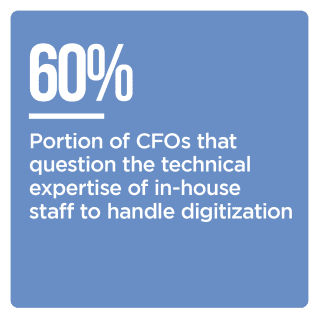Automation of accounts receivable (AR) and accounts payable (AP) processes through enterprise resource planning (ERP) solutions have become the gold standard for companies seeking to streamline their operations and cut down on manual tasks and errors. The key piece that is missing from ERP systems, however, is banking integration.
Digital AR and AP technology providers offer embedded banking solutions that integrate easily with existing ERP and accounting software, automatically send and receive payments and apply them to invoices to expedite reconciliations. This connection with banks can boost efficiency, streamline cash management and offer an overall better client experience.
In the June edition of the “Next-Gen Commercial Banking Tracker®,” PYMNTS explores companies’ implementation of ERP systems to streamline AR and AP processes, the benefits they can enjoy from doing so, and the challenges currently delaying adoption. These solutions will be increasingly vital to allowing businesses to participate and succeed in the digital economy.
Around the Next-Gen Commercial Banking Space
 Economic growth in China this year is projected to slow by almost half compared to 2021, resulting in payment delays of more than six months for many businesses, according to a recent report. Businesses in China expect a continued downturn, with only 44% anticipating sales to recover this year, a decrease from 65% in 2020. In addition, only 27% of Chinese companies forecast improved cash flow, a drop of nearly half from 2021.
Economic growth in China this year is projected to slow by almost half compared to 2021, resulting in payment delays of more than six months for many businesses, according to a recent report. Businesses in China expect a continued downturn, with only 44% anticipating sales to recover this year, a decrease from 65% in 2020. In addition, only 27% of Chinese companies forecast improved cash flow, a drop of nearly half from 2021.
Meanwhile, in an effort to offer robust embedded financial services for commercial clients, TD Bank has entered into a deal with FISPAN, a FinTech company that specializes in embedded banking platforms, according to a recent report. The relationship allows TD Bank to provide commercial banking services embedded within firms’ ERP systems and accounting software and will support payments, reporting and reconciliation platforms for the bank’s commercial clients.
For more on these stories, visit the Tracker’s News and Trends section.
Bank of America on How ERPs Can Help Organizations Optimize AR and AP Processes
Commercial clients want solutions that not only ensure their financial transactions’ speed and safety but also can improve their organizations’ operational efficiency, cash flow and reconciliation. The digital revolution in business is compelling companies to recognize the benefits of banking integration with ERPs, but there are many potential frictions that slow the process down.
In this month’s Feature Story, Michael Bosacco, global head of advisory for Bank of America, talks about how banks are reducing the disconnect with corporate customers and helping business partners gain greater workflow transparency and traceability of financial transactions by connecting to client ERPs, as well as the challenges that act as barriers to adoption.
PYMNTS Intelligence: How Deployment of ERP Systems Can Help Streamline AR and AP Processes
Perhaps nothing is more important to the success of an organization than the AR and AP processes it employs. Businesses demand more integrated services from their banks, and embedded banking within ERP systems is on the rise — especially cloud-based ERP AP solutions, payroll services and treasury management systems. A recent PYMNTS survey found that 95% of firms saw their average monthly payables surge in the past year, with some 73% of companies experiencing increases in monthly AP volumes of between 31% and 50%. To help them manage this growth, many digital AR and AP technology providers offer collaborative platforms that integrate easily with existing ERP and accounting systems.
This month, PYMNTS Intelligence takes a closer look at ERP systems’ advantages over traditional AR and AP processes and whether these systems are fulfilling executive expectations. It also examines some of the challenges inherent in adopting ERP solutions.
About the Tracker
The “Next-Gen Commercial Banking Tracker®,” a PYMNTS and FISPAN collaboration, examines companies’ implementation of ERP systems to streamline AR and AP processes, the benefits they can enjoy from doing so and the challenges currently delaying adoption.

